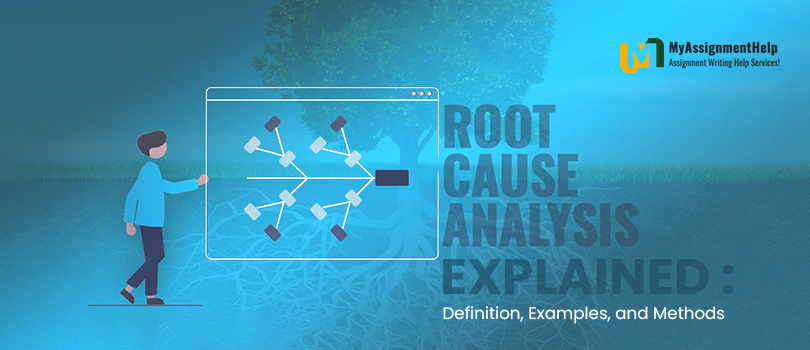The discipline of Total Quality Management (TQM) may be traced all the way back to root cause analysis (TQM). TQM has evolved in a variety of areas, including issue analysis, problem solutions, and root cause analysis. Root Cause Analysis (RCA) is a component of a broader problem-solving process and an essential component of continuous improvement. As a result, root cause analysis is a critical component of every organization’s continuous improvement initiatives. It is vital to highlight that RCA will not create outcomes on its own; it must be integrated into a bigger problem-solving effort for quality improvement. In this article, we shall offer you the Root Cause Analysis Assignment Help by providing a definition of root cause analysis, and its benefits.

What is Root Cause Analysis?
Root Cause Analysis (RCA) is the process of identifying the key root causes of issues to address it by using different strategies. Root cause analysis may be carried out using a variety of ideas, techniques, and approaches that can all be used to uncover the underlying reasons for a trend or an event. Beyond simple cause and effect, RCA can reveal where processes or systems failed or produced an issue in the first place.
Using root cause analysis to investigate problems or occurrences should assist you in achieving your primary goal of:
- What occurred?
- How does this happen?
- How does that go bad?
- Activities to prevent the recurrence of the difficulties
The RCA consists of three key priorities such as:
- The initial purpose, as the name indicates, is to identify the root cause of an issue or occurrence.
- The second goal is to determine how to treat, reward, or profit from root cause issues.
- The third goal is to use what you’ve learned from the research to avoid probable challenges.
What are the Benefits of Root Cause Analysis?
Pollution is caused by repetitive difficulties in the procedure. Downtime on computers, rework of products, raised scrap, money spent and time spent “fixing” the issue are all examples of waste. Many times, we believe the problem has been resolved when, but we have only treated the symptom, which was the initial stage of the issue, and not considered to be the root cause itself. RCA methodologies and technologies aren’t just for manufacturing process issues. Several businesses use RCA techniques in a variety of settings using this systematic approach to address issues. One of the common examples of RCA is that if an RCA is executed properly, then you can able to understand the failures of the structures or processes which thereby can help you prevent the occurrence of the problem again and again. You can perform an RCA to discover what happened, the causes of the happenings, and what requires to be improved or adjustment. The RCA can be used to solve repeat difficulties.
What are the Core Principles of Root Cause Analysis?
Some of the key ideas that underlie good root cause analysis should be obvious. Our professional essay writers shall provide you with the fact that not only will these improve analysis quality, but they will also assist the analyst to obtain confidence and acquire from stakeholders or clients.
- Concentrate on addressing root causes instead of merely symptoms.
- Don’t overlook the necessity of treating symptoms in order to get temporary relief.
- Recognize that there can be, and frequently are, several root causes.
- Concentrate on Why and How anything happened instead of Who has been to blame.
- Be diligent in your search for tangible cause-and-effect evidence to substantiate root cause assertions.
- Give sufficient facts to guide a remedial action plan.
- Think on how a root cause could be avoided (or duplicated) in the future.





